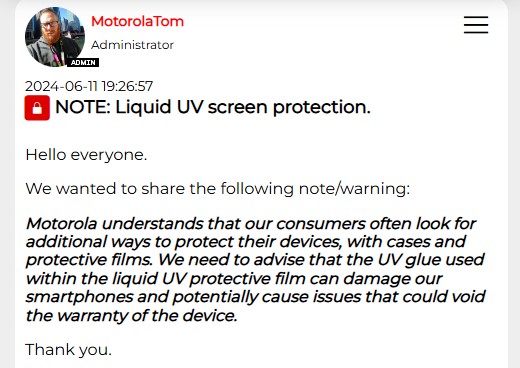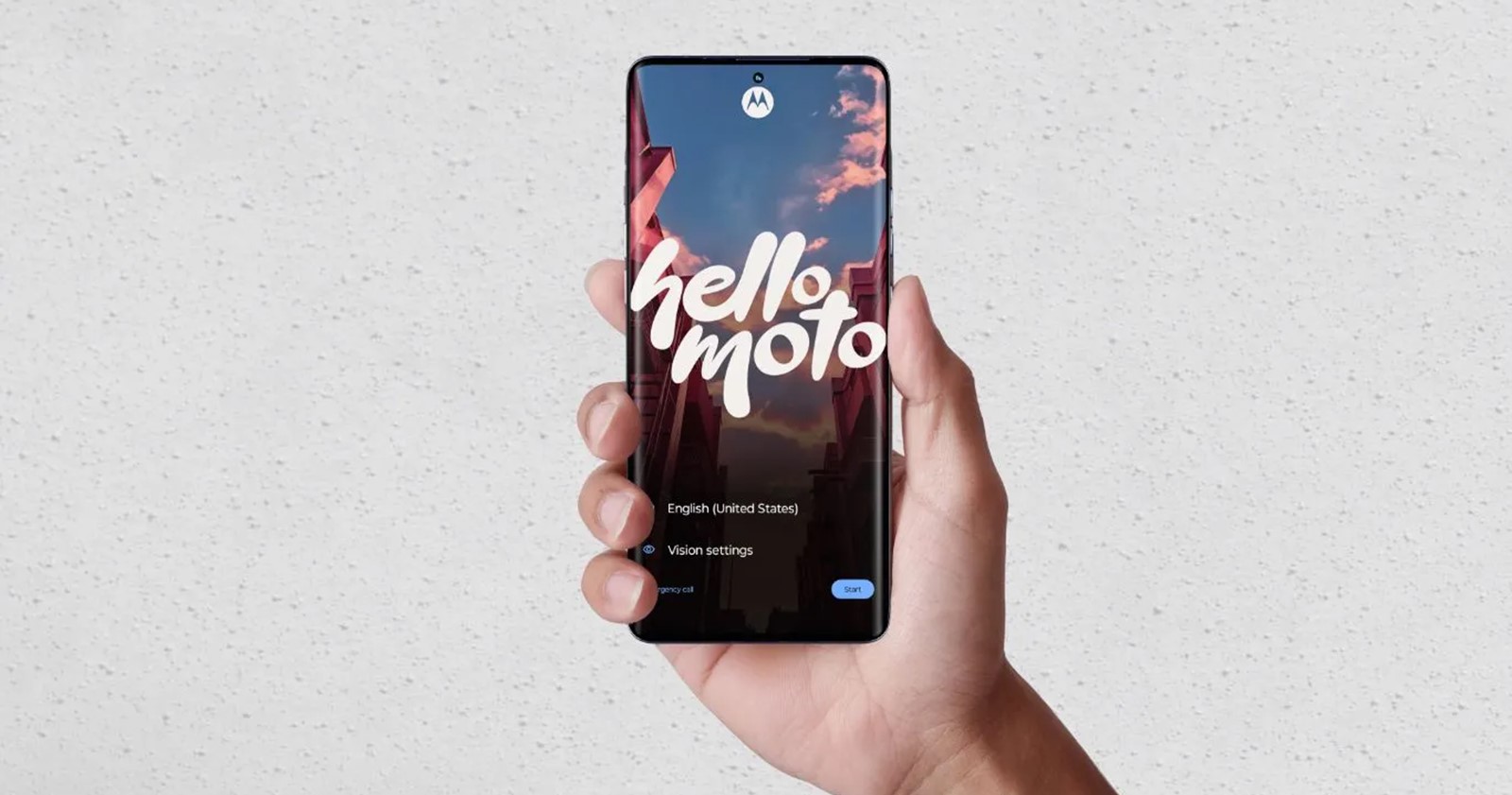Motorola has issued a warning to owners of its Edge 50 Pro, Edge 50 Fusion, and Edge 50 Ultra models, advising against the use of liquid UV screen protectors. This announcement comes hot on the heels of a similar cautionary statement from Xiaomi earlier this year.
In a note to customers, Motorola acknowledged that many users seek extra protection for their devices through cases and films. However, the company emphasized that the UV glue used in liquid UV protectors can damage smartphones, potentially leading to issues that could void the device’s warranty.
Motorola doesn’t go into specifics, but one reason could be screen compatibility. Some screens might not be compatible with certain types of UV glue. For instance, if the screen has a special coating or treatment, the glue might not adhere properly or could damage the coating.

This is the second major smartphone manufacturer to publicly warn against liquid UV protectors. Xiaomi recently raised concerns about potential damage to phone displays and the risk of warranty invalidation due to the use of these protectors. The warnings from both companies highlight potential risks associated with liquid UV protectors, such as adhesive seepage into phone components, difficulties in removal, and possible damage to the screen itself.
Xiaomi warns that when using a liquid UV screen protector, the liquid adhesive can sneak into your phone’s buttons, charging port, speaker, and even under the battery cover. This can cause a whole host of headaches like random restarts, sticky buttons, muffled sound, and even damage to the battery cover. These issues can easily void your warranty.
Samsung has not provided specific guidance on the use of UV glue in screen protectors. However, some Samsung users have reported issues such as the back cover peeling off and interference with the phone’s original adhesive after installing liquid UV screen protectors. This explains why Samsung generally advises users to use high-quality, Samsung-approved accessories to avoid damage and ensure compatibility with their devices.
Apple says their warranty doesn’t apply to “consumable parts, such as batteries or protective coatings that are designed to diminish over time, unless failure has occurred due to a defect in materials or workmanship,” so you might want to stay off liquid UV protective films for the same warranty reasons stated by Xiaomi.
Liquid UV protectors offer attractive features like full coverage and self-healing properties, but the potential downsides have led these manufacturers to recommend alternative screen protection options. While Motorola and others don’t explicitly mention it, Xiaomi recommends using tempered glass, non-tempered, or electrostatic films as safer alternatives to safeguard your smartphone screens.
To ensure a smooth experience for all users, we strongly advise against the use of liquid UV adhesive protectors as they may result in malfunctions, which could void your warranty. Instead, we recommend considering alternatives such as tempered glass, non-tempered, or electrostatic films for worry-free screen protection, which do not require the application of liquid UV-based glue or adhesive, ensuring optimal device performance.
With two major players in the smartphone industry raising red flags, it’s clear that the use of liquid UV screen protectors is a decision that should not be taken lightly. Consumers are encouraged to weigh the potential benefits against the risks and explore alternative protection methods to ensure the longevity and functionality of their devices.
For users of the Motorola Edge 50 series and other smartphones, this advisory serves as a crucial reminder to carefully consider the type of screen protector used. Liquid UV screen protectors, while popular for their seamless fit, carry significant risks that could lead to costly repairs or voided warranties.
TechIssuesToday primarily focuses on publishing 'breaking' or 'exclusive' tech news. This means, we are usually the first news website on the whole Internet to highlight the topics we cover daily. So far, our stories have been picked up by many mainstream technology publications like The Verge, Macrumors, Forbes, etc. To know more, head here.


